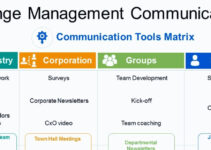Kaizen is a Japanese term meaning quality improvement and it focuses on making small and incremental changes to amplify systems and processes. It plays a key role in quality management and improvement for businesses and companies across the world. Today, we’ll discuss Kaizen for quality improvement; its definition; strategies; process, advantages and disadvantages of Kaizen approach to quality improvement or Kaizen in quality management.
Toyota was the first company to implement the Kaizen strategic approach in its production and manufacturing processes. Many other companies and businesses started implementing this concept in their processes soon after. Statistical reports and studies have proven that Kaizen results in the form of high quality and productivity. It allows businesses and companies to amplify their productivity roundabout 20 to 30%, and decrease the defect rate by 90%.
What is Kaizen for Quality Improvement?
Kaizen for quality improvement focuses on detecting issues and defects in the project by conducting data analysis and evaluating the results after implementing the changes. The desired result should facilitate the maintenance of various small and incremental contributing factors. Kaizen in Quality Management often establishes the ground for a lean production strategic approach.
However, “gemba” is one of the main principles of kaizen meaning the real place and it comprises of following steps and elements;
- Physically visiting the location or working site
- Observing and analyzing the processes
- Recognizing the key areas for improvements
- Making sure improvement is relevant to actual and real experiences, rather than conceptual ideas
“Poka-yoke” is the other principle and strategic approach of Kaizen approach to quality improvement or Kaizen in quality management and it means mistake proofing. It comprises of following steps and processes;
- Designing the product or process
- Make sure to avoid errors before they occur
- Results in the form of high-quality and limited waste
Strategies of Kaizen for Quality Improvement
Some of the main strategies of Kaizen for quality improvement or Kaizen approach to quality improvement or Kaizen in quality management are as follows;
5S Model
Kaizen 5S framework focuses on implementing standardization and organizing in the workplace to reduce wastefulness and amplify growth and productivity. The five S elements involved in the acronym Kaizen 5S model are as follows;
- Sort
- Set-in or system
- Shine
- Standardize
- Sustain
VSM (Value Stream Mapping)
Value stream mapping is a highly beneficial tool and it focuses on recognizing value-added and non-value-added steps involved in the process by visualizing the workflow and making it visible and transparent. The data offers you the key insight to amplify process efficiency and remove waste.
PDCA Cycle
PDCA is the other quality improvement tool and it focuses on planning, doing, checking, and analyzing. The process cycle comprises of planning the change, executing it, analyzing the results, and making adjustments based on the feedback and customer reviews to amplify the processes. You can repeat the cycle indefinitely to achieve quality and continuous improvement.
Process of Kaizen for Quality Improvement
Some of the main steps in Kaizen for quality improvement process or Kaizen approach to quality improvement process or Kaizen in quality management are as follows;
Detecting Improvement Areas
First of all, you should recognize the existing processes of the company that help you to find the areas needing improvement. In order to complete the process of analysis, you can use the following;
- Data analysis
- Suggestion of employees
- Customer feedback
Setting Objectives
After recognizing the improvement needed areas, you should establish goals and objectives for what you want to achieve with the improvement plan. You should make sure that your goals and objectives are smart (specific, measurable, achievable, relevant, and time-bound).
Process Analysis
After setting goals and objectives and developing a change team, you should conduct a process analysis to detect the underlying cause of the problem. Some of the main tools and equipment that would help you to perform process analysis are as follows;
- Pareto charts
- Cause-and-effect diagrams
- Flowcharts
Execute Improvement
After recognizing the main cause of the problem, and now you should implement the change and improvement plan to deal with the problem. It comprises executing small and incremental changes and then implementing changes on a large scale.
Evaluate Performance
It is significant to measure and evaluate the growth and progress to make sure that the changes and improvement plans are functional. You should analyze and evaluate the impact of the changes with data and make adjustments in the process.
Repeat the Process
Kaizen is a continuous improvement process and it comprises achieving quality improvement in product, processes, and employee performance. It allows you to develop and promote a culture of improvement that would deliver quality management in the long term.
Advantages of the Kaizen Approach to Quality Improvement
Some of the main benefits and advantages of the Kaizen approach to quality improvement or Kaizen in quality management are as follows;
- Makes sure to bring everyone on board about the change program to amplify efficiency and effectiveness
- Experience improvement in delivery, productivity, and quality for roundabout 10-30%
- Developing and promoting a culture of continuous improvement
- Yields in the form of high profitability, happier customers, and better processes
Disadvantages of the Kaizen Approach to Quality Improvement
Some of the main challenges and disadvantages of the Kaizen in quality management are as follows;
Difficult to Sustain
Implementing quality improvement strategies is a continuous process and it requires commitment from various employees at different levels of the organization. It is highly difficult to change the habits and behavior of people; that’s what makes it critical to embed changes and improvement in the culture.
Limited Management Support
The main reason behind the failure of the quality improvement program is receiving lack of support and commitment from the top management. The company’s management should provide time, training, and resources to employees for achieving and maintaining quality. It is difficult for them to set clear goals, objectives, and metrics; which makes it difficult to analyze progress and bring everyone on board about the change program.
Employee Resistance
Employee resistance to the change program and not supporting quality improvement programs are the main reasons behind the failure of the program. If they have performed their role for a long time, then it would decrease their participation rate.
Conclusion: Kaizen for Quality Improvement |Kaizen in Quality Management
After an in-depth study of Kaizen for quality improvement; we have realized that the Kaizen model plays a key role in quality improvement and management. If you are learning about the Kaizen in quality management; then you should keep in mind the abovementioned steps, process, definition, strategies, advantages, and disadvantages.
Ahsan is an accomplished researcher and has a deep insight in worldly life affairs. He goes Live 3 days a week on various social media platforms. Other than research writing, he’s a very interesting person.


